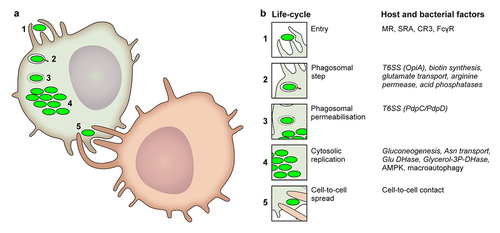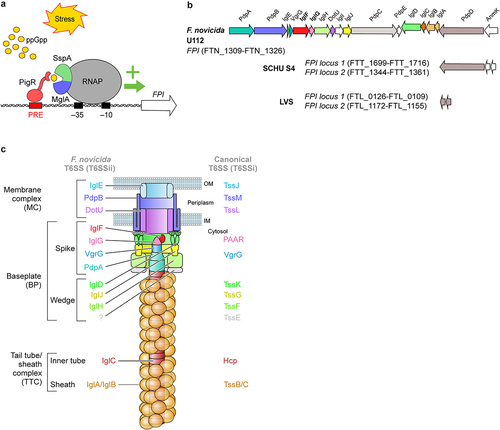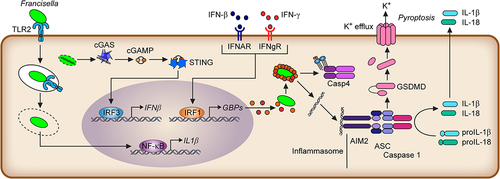Figures & data
Table 1. Reservoir, vectors and pathogenicity for humans of different species of Francisella..
Table 2. Characteristics of Francisella subspecies traditionally used to study virulence.
Figure 1. Francisella life cycle and the main host and bacterial factors involved at each step.

Figure 2. Francisella pathogenicity island, its transcriptomic regulation and its encoded T6SS.

Figure 3. Overview of the innate immune responses upon macrophage infection.

Data Availability statement
The data, materials and original svg figures that support the results or analyses presented in this paper are freely available upon request.
